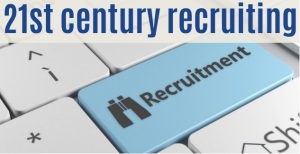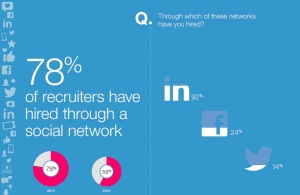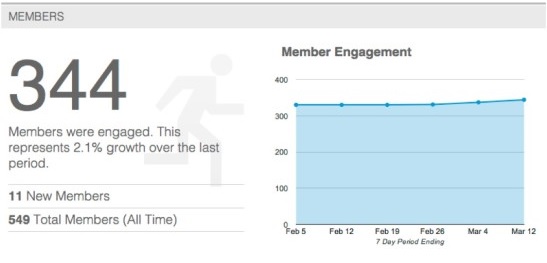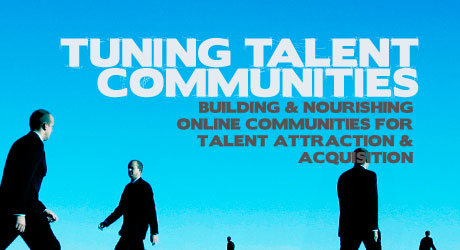In my last blog post (TSPK101- Expanding Your Technology Vocabulary for Business Use); I spoke about the need for HR professionals to really understand some of the industry technology terms that are being used in strategic conversations. As a part two, I want to expand that conversation and drill down a layer further. This post will focus on deciphering the terminology behind social recruitment.

The term social recruitment was first used as early as 2009, but started to become part of conventional recruitment strategy around 2011[1]. Social recruitment has now become mainstream and many vendors now offer social recruiting and marketing products in addition to their core recruitment management system (RMS) offering. With the increasing adoption and investment in social recruitment, also comes the necessity to articulate ROI and explain its success. But, despite data being available through a multitude of channels, many recruitment functions still struggle with compiling data to answer to the lingering Executive question… Tell me how social recruitment adds value?
Stumped? There’s good new… this is not a quiz!
For a few years I’ve talked about the importance of introducing new metrics into the HR dashboard that can clearly describe the impact of social recruitment.

Metrics can be the gateway to tell your story. It provides the forum to share success, lessons learned and forecast strategy based on data. To anchor social recruitment, a new wave of terminology needs to be adopted into daily operational metrics, performance measures, intake discussions and sourcing strategies make it meaningful.
Not sure where to start? First, let’s examine a few common industry terms that you and your team should know and use on a weekly, if not daily basis:
| Term | Description | Why is it important? |
| Click Through Rate (CTR) | Measures the click from the initial link though to the content page. (e.g. the click from the initial job posting link on a job aggregator to the apply button on the job posting RMS). | It provides insight into how compelling your content is. The marketing to get you to click on the initial link may be good, but if candidates are not clicking through, it could be due to your content. Companies should use click through rate metrics as an indicator on what’s working and what needs to be improved. You want high click through rates to measure applicant channel ROI. |
| Employee Value Proposition (EVP) | It’s a unique set of offerings, associations and values that will positively influence the most suitable target candidates to choose you as an employer. The proposition must be attractive, true, credible, distinct and sustainable.[2] | In a nutshell, it articulates what differentiates your company from your competitors. Why should someone choose to work at your company versus a direct or industry competitor? If you want Manager’s and employees to become brand ambassadors, they need to be equipped with EVP marketing messages to promote the company. |
| Engagement | Two way interaction of your companies brand and content between the end user and the company. | Engagement identifies people who express an interest in your brand and content by interacting with it. It provides the opportunity to build rapport, creating a pipeline of candidates engaged with your company brand. Research shows that engaged employees have higher retention rates resulting in bottom line savings to the organization over time[3]. |

| Job Aggregator | An on line database that scrapes and advertises job postings from company websites at no cost. | Job aggregators have transformed the traditional job posting model. Jobs from companies are posted in one central place and are SEO indexed. Companies don’t pay to advertise job postings, they are there for free. This makes it more appealing for candidates as all jobs can be found here regardless of where they start their search (e.g. Google, Yahoo, Indeed.com, etc.). Job aggregators provide high source of hire ROI. |
| Pay per Click (PPC) | The amount paid when sponsored content (e.g. job posting) is clicked on a website. | This helps companies stay within a budget and measure ROI based on clicks. If you sponsor jobs, you only pay for what is performing. |
| Reach | Reach is the potential audience for content based on total follower count (Twitter, Pinterest and LinkedIn followers, total Likes on your Facebook page, etc). If your boards have 1,000 followers on Pinterest, then each of your pins could potentially reach 1,000 people. [4] | Reach provides insight into the visibility of your content as it is shared (via a like or share) to other users networks. The higher your reach the higher the probability you will attract more applicants. |
| SEO | Search Engine Optimization (SEO) – Is the ability for your content to rank higher on a search engine when search results are returned. | Most candidates now start their job search on a search engine (Google, Yahoo, Khoj, Baidu, etc.). The higher your content appears in search results, the higher the probability it will be clicked on. |
| Social Sharing | Sharing content through social media. | Most websites recognize the power of sharing content on social networking sites. Social sharing is the modern version of emailing job postings to networks. RMS’, aggregators and job boards, now offer the ability social share jobs on sites such as LinkedIn, Facebook, Twitter, etc. |

| Talent Brand | The highly social, public version of your employer brand incorporating what your talent thinks, feels and shares about your company as a place to work[5]. | Your talent brand carries more credibility than employment brand because your employees are advocates or detractors of the message. Talent brand is important because it represents a genuine view from an employee. Tools like LinkedIn’s Talent Brand Index allows companies to benchmark against competitors to see how your talent brand is performing to attract and source candidates. |
| Talent Communities | A recruitment product that offers websites geared to specific roles, candidate types or locations where people can register and receive company information and notifications. | Talent communities provide specific branding, content and messaging to candidates based on demographic information. While content on talent communities can be engaging, they also serve as the feeder for talent pipelines for specific roles. |
| Targeted Marketing Recruitment Campaigns | Use keywords and/or demographic information to target and attract relevant potential applicants for specific roles. (e.g. Call Centre, Actuaries, Mobile App developers, etc.). | Most candidates start their job search on a search engine (Google, Yahoo, Khoj, Baidu, etc.). Unlike traditional methods of post and prey advertisements, campaigns have become a game changer because it seeks out specific individuals that appear to fit the role profile of the job. This creates a relevant pipeline and/or applicant pool. In addition to Google AdWords, social networking sites such as LinkedIn, Facebook and Twitter also offer these services. |

This by no means, is an exhaustive list of social recruitment terms. It’s really meant to be an introduction to some of the more common terms you can expect to hear and see in blogs, articles, white papers and research briefs. So the next time you are asked how reach impacts your sourcing strategy, you’ll be well positioned to give an answer!
If you would like more information on HR metrics, check out my blog post Are You Using Data to Drive Your HR Strategy.
I’d love to hear from you! Please let me know if you found this list useful. You can tweet me @annzaliebarrett or follow me LinkedIn.
 Ann Barrett, Director Integrated Solutions
Ann Barrett, Director Integrated Solutions
_________________________________________________________________________________
[1] Wikipedia
[2] http://www.slideshare.net/duraturo/what-is-an-employer-value-proposition
[3] http://www.bus-ex.com/article/employee-engagement-retention-and-communication
[4] http://blog.hootsuite.com/beginners-guide-to-social-media-metrics-reach-exposure/
[5] http://www.slideshare.net/linkedin-talent-solutions/5-reasons-for-investing-in-your-talent-brand-v3
